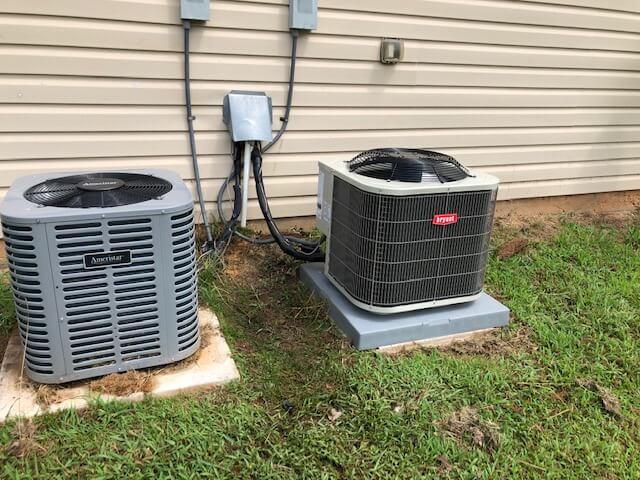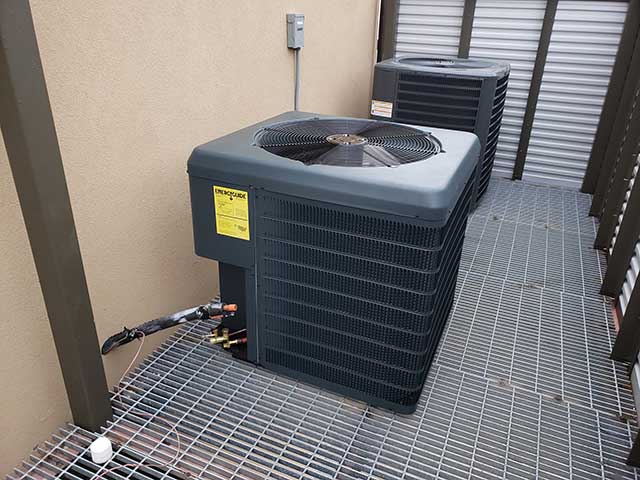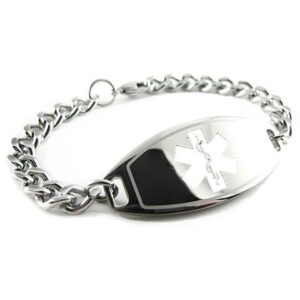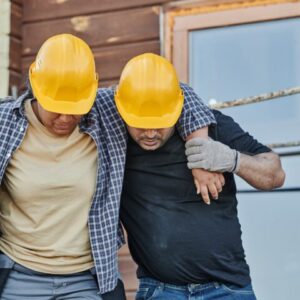An air conditioner (AC) is a lifesaver during hot weather, providing relief and comfort in the sweltering summer heat. But what happens when you turn it on, and there’s no cool air blowing out? It can be frustrating, especially when you rely on your AC to keep you cool. If your air conditioner isn’t blowing air, don’t panic just yet. There are several possible causes of this issue, many of which are simple to fix. In this blog post, we will walk you through some troubleshooting steps to help you identify the problem and, in many cases, resolve it on your own.
1. Check the Thermostat Settings
Before diving into the more technical aspects of your air conditioner, it’s always a good idea to start with the basics. Sometimes, the problem may be as simple as the thermostat settings. Make sure your thermostat is set to “cool” mode, and the temperature is set lower than the current room temperature.
- Temperature Setting: If the temperature on your thermostat is higher than the current room temperature, your AC may not engage. Adjust the thermostat downwards to prompt the system to turn on.
- Fan Settings: Ensure the fan setting is switched to “Auto” or “On,” depending on your preference. In the “Auto” mode, the fan will turn on and off according to the temperature setting, while in the “On” mode, it will run continuously, regardless of the cooling cycle.
If the thermostat is set correctly and you still don’t hear the fan kick on, move on to the next step.
2. Inspect the Air Filter
A clogged or dirty air filter is one of the most common causes of an air conditioner not blowing air properly. The filter is responsible for trapping dust, dirt, and debris from entering your system, but over time, it can get clogged, restricting airflow and causing the AC to stop working efficiently.
- Check the Filter: Locate your air filter (usually behind a panel near the return vent) and inspect it. If it looks dirty or clogged, it’s time to replace or clean it (depending on the type of filter).
- Replace or Clean: If you have a disposable filter, simply replace it with a new one of the same size and type. If your filter is reusable, clean it with warm, soapy water and let it dry completely before putting it back in.
Changing or cleaning the air filter is a simple fix that can restore airflow to your AC, helping it run smoothly.
3. Look for Obstructions in the Vents
Another reason your AC might not be blowing air is if there are obstructions in the vents. Dust, debris, or furniture blocking the vents can restrict airflow, preventing the cool air from circulating through the room.
- Check All Vents: Go through your home and check all the air vents connected to your air conditioning system. Ensure that they are open and free from any blockages.
- Clear the Vents: Move any furniture, curtains, or other objects that might be obstructing airflow. If you notice excessive dust or debris around the vents, clean them out with a vacuum or a damp cloth.
Having clear vents will help ensure proper airflow and efficient cooling.
4. Inspect the Circuit Breaker
If your air conditioner isn’t blowing air at all, it’s possible that the system isn’t receiving power due to a tripped circuit breaker. The electrical panel in your home controls the power supply to various appliances, including your AC unit.
- Check the Breaker: Go to your home’s electrical panel and check if the breaker for the air conditioner has been tripped. If it has, flip the breaker back to the “On” position.
- Reset the System: Once the breaker is reset, give your air conditioner a few minutes to start up again. If the breaker trips again, it could indicate an underlying electrical issue that requires professional attention.
5. Examine the Outdoor Unit
If you have a split-system air conditioner (one with an indoor and outdoor unit), it’s essential to check the outdoor unit as well. The outdoor unit is responsible for releasing heat from the refrigerant, and if it’s blocked or malfunctioning, it can impact the overall cooling performance.
- Check for Blockages: Make sure there are no leaves, dirt, or debris blocking the outdoor condenser unit. Clean any obstructions carefully and ensure there is sufficient airflow around the unit.
- Listen for Strange Noises: Pay attention to any unusual sounds coming from the outdoor unit, such as a buzzing or grinding noise. This could indicate a mechanical issue with the compressor or fan that requires professional service.
6. Check the Condensate Drain
Air conditioners remove moisture from the air during the cooling process, and this moisture is drained away through a condensate drain. If the drain is clogged, water may back up into the system, causing it to shut down or stop working properly.
- Inspect the Drain: Find the condensate drain line (it’s usually a PVC pipe near the outdoor unit) and check for any blockages. If the drain is clogged, you can try using a wet-dry vacuum to clear the obstruction.
- Clean the Drain: Once cleared, you can clean the line with a mixture of water and mild bleach to prevent mold or algae buildup, which could clog the drain again.

7. Check for Refrigerant Leaks
Refrigerant is essential for cooling your home, and if there’s a leak in the system, the AC won’t be able to cool the air properly. Low refrigerant levels can cause the system to malfunction, and the lack of cooling can also prevent the fan from blowing cold air.
- Signs of a Leak: If your AC is blowing warm air or not cooling effectively, refrigerant levels could be low. You may also notice ice buildup on the evaporator coils, which can indicate a refrigerant issue.
- Call a Professional: Refrigerant issues require specialized knowledge and tools to repair. If you suspect a leak, it’s best to call a licensed HVAC technician to inspect and recharge your refrigerant.
8. Contact a Professional HVAC Technician
If you’ve gone through these troubleshooting steps and your air conditioner is still not blowing air, it may be time to call in a professional. Air conditioners are complex machines with many components, and some issues (like electrical malfunctions or compressor problems) require expert knowledge to diagnose and repair.
- When to Call a Pro: If you notice any of the following, it’s best to schedule a service call:
- The breaker keeps tripping.
- The system is still blowing warm air after troubleshooting.
- You hear strange noises coming from the unit.
- There’s ice buildup on the coils.
A qualified HVAC technician can inspect your system, identify the root cause of the issue, and provide a solution that gets your AC up and running again. For reliable and professional care, you can also consider Eunos aircon servicing, which offers expert maintenance and repair to ensure your air conditioning system operates efficiently.
Final Thoughts
An air conditioner that isn’t blowing air can be caused by a variety of issues, but with a little troubleshooting, you can often resolve the problem yourself. Start by checking the basics, like the thermostat settings and air filter, and move on to more complex possibilities like blockages, electrical issues, or refrigerant leaks. If you’re unable to fix the issue yourself, don’t hesitate to contact a professional technician who can ensure your AC is back in working order. Regular maintenance and prompt repairs can help extend the lifespan of your air conditioner and keep it running smoothly for years to come.






